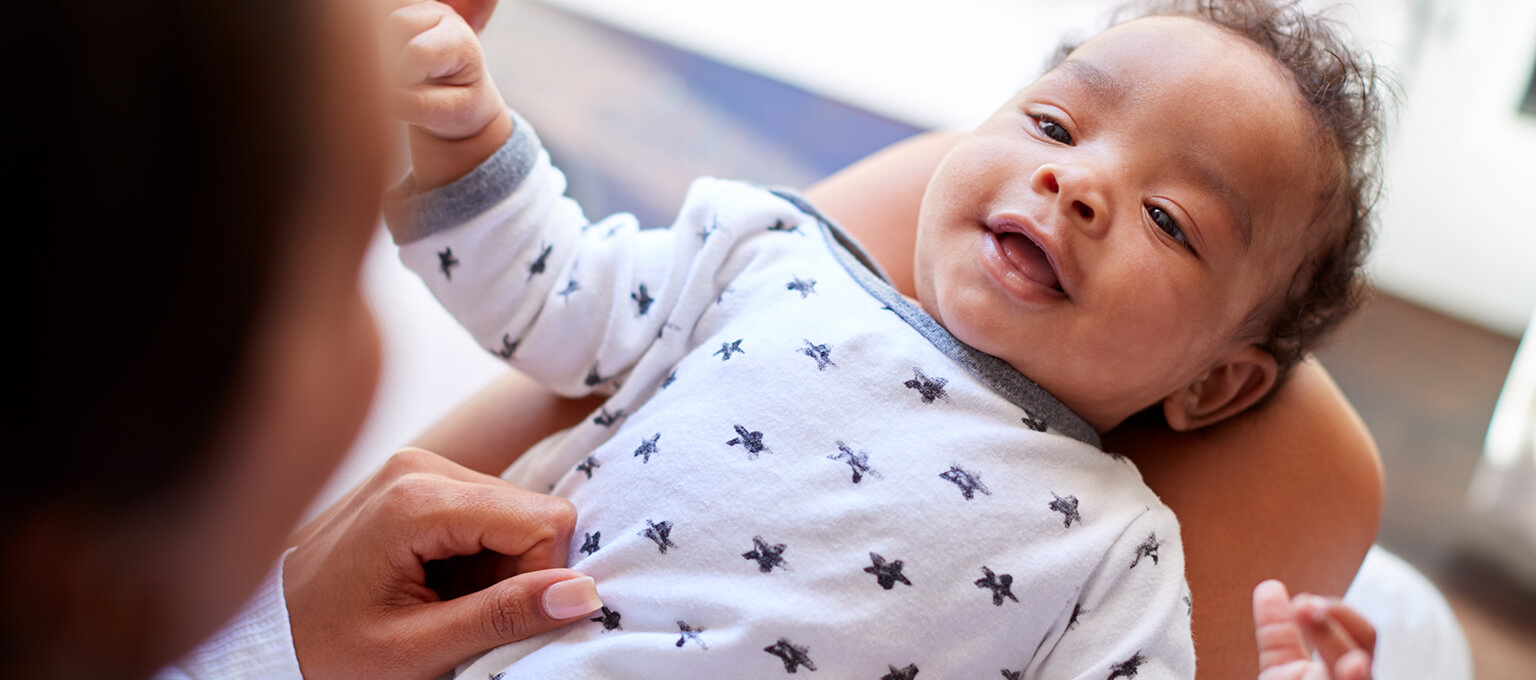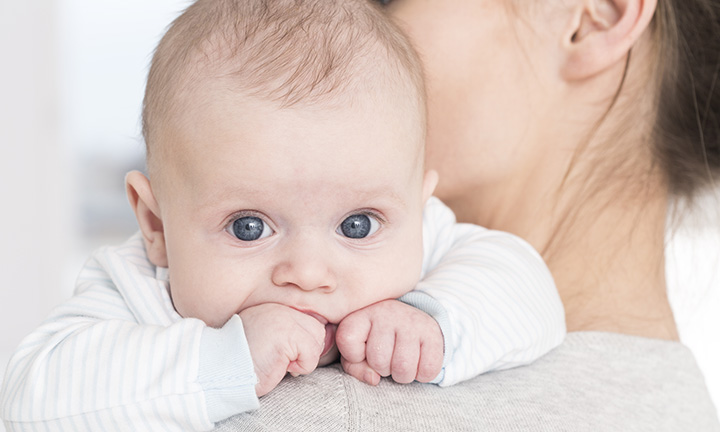
When Do Babies Start Smiling?
Seeing your baby look up at you and smile for the first time is a moment that will stay with you forever. Read on to find out find out what’s behind your baby’s first smiles and when you might be treated to your little one’s first proper ‘social’ smile.
When Can Babies Smile?
Wondering at what age babies can smile? Well, that depends what you mean by smiling.
During your baby’s first month or so, you may notice the occasional smile while he or she is asleep.
You also might see your newborn’s mouth widening into a grin as he or she tries to mimic your own facial expressions while awake.
However, this type of smiling isn’t the real deal yet. In other words, these smiles aren’t yet those smiles that are in response to something that gives him or her pleasure or feelings of affection.
You’ll have to wait a little longer before you see your baby flash his or her first real smile, sometimes called a ‘social’ smile. It’s actually in the second month that you’ll likely see your baby’s first real smile.
Your Baby’s First ‘Social’ Smile: A Sign of Development
It can be quite rewarding to see your baby smile during sleep, but you’ll absolutely adore the sight of those ‘social’ smiles that happen when your baby is awake and alert.
Besides being an unforgettable moment in your life as a parent – and melting your heart in the process – those first smiles are also a key milestone in your baby’s development.
Facial expressions – especially smiles – are an important means of communication for your little one, and those smiles will add to the growing repertoire of cues that you will learn to recognise, often in combination with other signs of how your child is feeling.
Just as crying or restlessness might indicate hunger or discomfort (perhaps time for a nappy change), smiling can mean your baby is content or ready to play.
To help you interpret these signs, look for others as well. For example, ‘let’s play’ cues could include smiling and any of these other signs:
By about 3 or 4 months old, you may find that your baby starts to smile at the sound of your familiar voice. And as well as smiling, your baby may also start to make ‘conversation’ with you in the form of coos and gurgles.
It will still probably be months before your child starts forming recognisable words, but even now you can already see how something as simple and beautiful as your baby’s first smile is more than just a magical moment – that toothless grin is also one of the earliest steps on the road to eventually learning how to talk.
How to Encourage Your Baby to Smile
Your baby's first smile will likely happen sometime in the second month. Until then, be patient and know that eventually you will see it.
In the newborn stage, looking at your face is one of the most important ways your baby can learn, so the best way to encourage your little one to smile is to talk and smile to your little one as much as possible.
Not only that: Talking to your baby, listening to his or her gurgles and smiling at him or her helps your infant's brain grow and develop.
Here are some tips to help encourage your baby to start — and keep — smiling and develop those communication skills:
Keep in mind, every baby develops in his or her own way and at a his or her individual pace. However, if your baby doesn't start smiling by about 3 months of age, let your health visitor know.
FREQUENTLY ASKED QUESTIONS
The Bottom Line
If you haven’t seen your baby’s first true smile yet, you’re probably waiting with bated breath. Keep on smiling at your baby, and eventually, when the time is right, he or she is sure to smile back.
That moment will be unforgettable, but the best is yet to come: You’ll soon learn how to make your baby smile and your little one, too, will quickly find new ways of showing his or her enjoyment with an ever-widening range of grins, coos, giggles and other baby noises and expressions.
How we wrote this article The information in this article is based on the expert advice found in trusted medical and government sources, such as the National Health Service (NHS). You can find a full list of sources used for this article below. The content on this page should not replace professional medical advice. Always consult medical professionals for full diagnosis and treatment.
Read more about Newborn Baby
Related Articles
Join Pampers Club and get:













